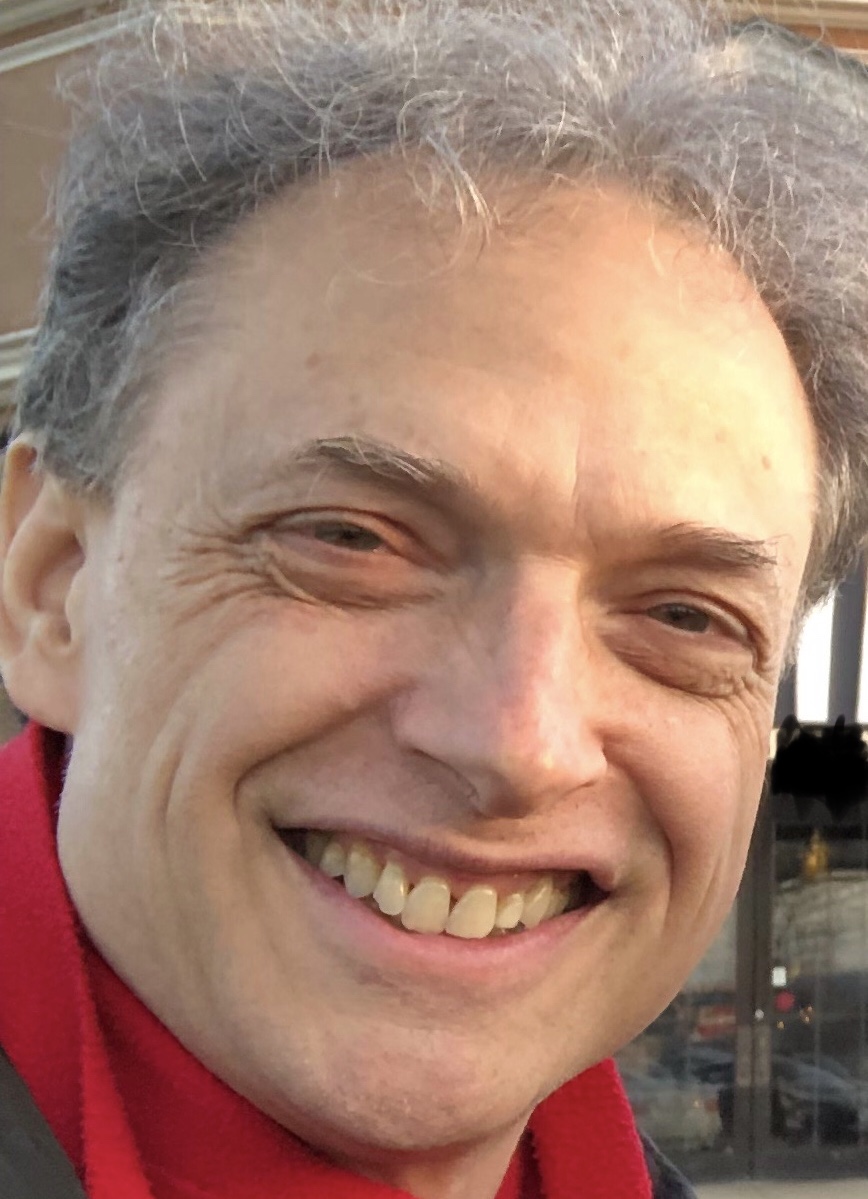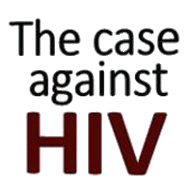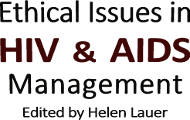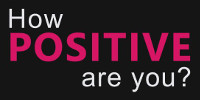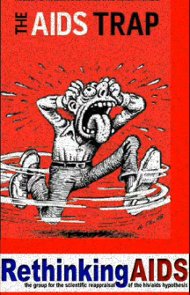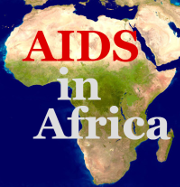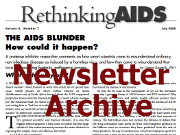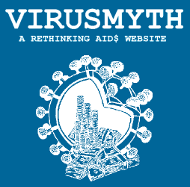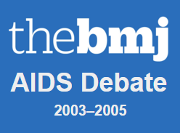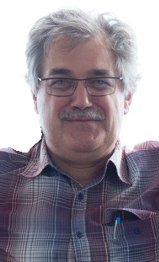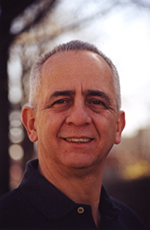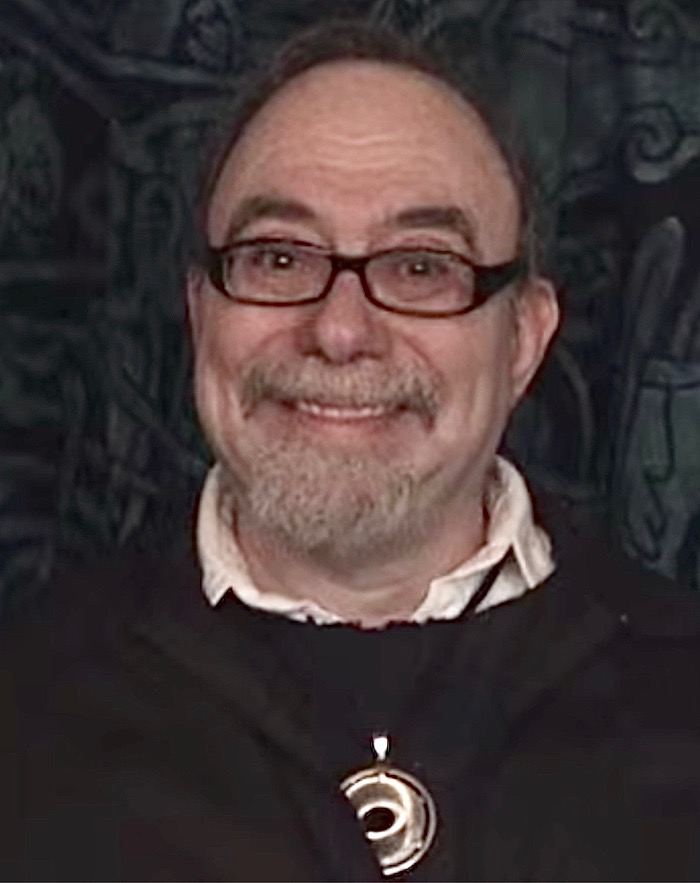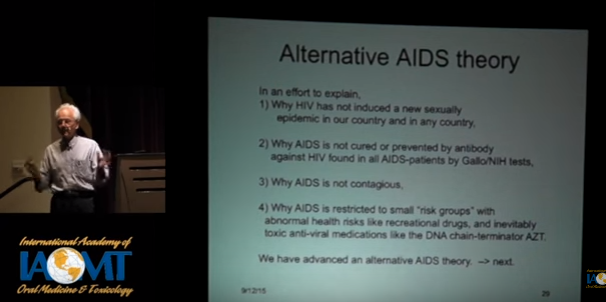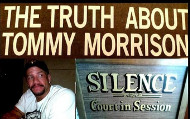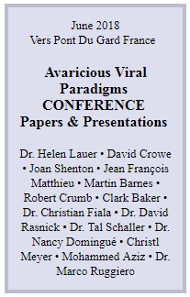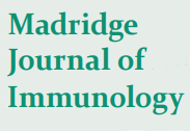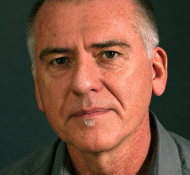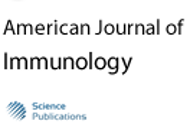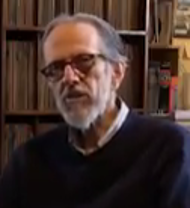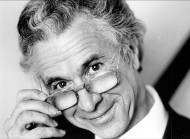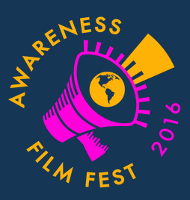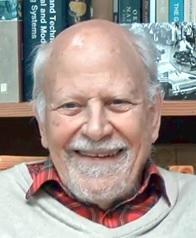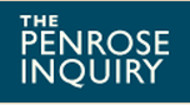Welcome to Rethinking AIDS
Read new president Tom DiFerdinando’s introduction to Rethinking AIDS
RA Board Member Helen Lauer brings Reality to the Ebola Discussion
 International Development Policy — In a rarified and politically correct discussion of African health policy, which always ends with Western NGOs demanding more money to save Africa (which somehow never happens), Rethinking AIDS board member Helen Lauer addresses the reality that Health SWAT teams and vaccines aren’t going to solve the development problems of Africa. If Africans don’t get access to simple things like clean water, no high tech health interventions can bring real change. While the discussion is mostly about Ebola, it equally applies to AIDS and other epidemics blamed on infectious agents ignoring all signs of social, environmental and economic factors.
International Development Policy — In a rarified and politically correct discussion of African health policy, which always ends with Western NGOs demanding more money to save Africa (which somehow never happens), Rethinking AIDS board member Helen Lauer addresses the reality that Health SWAT teams and vaccines aren’t going to solve the development problems of Africa. If Africans don’t get access to simple things like clean water, no high tech health interventions can bring real change. While the discussion is mostly about Ebola, it equally applies to AIDS and other epidemics blamed on infectious agents ignoring all signs of social, environmental and economic factors.
Read the book. Don't believe anything, investigate the many cited references. One of the better books on the topic out there.
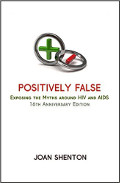 January 2016 — A review of Joan Shenton's book, Positively False: Exposing the Myths around HIV and AIDS:
January 2016 — A review of Joan Shenton's book, Positively False: Exposing the Myths around HIV and AIDS:"I have no idea how anyone could possibly still hang onto the belief that HIV=AIDS after reading even the first 20 pages of this well done book ... This horrible mistake in blaming HIV, has lead the world down the wrong path, with the wrong medication. It's caused inordinate human suffering ... If you can only read a single book, this could be the one. Read it. You won't believe it at first. But go ahead and read some of the actual lab tests. You will realize that no reasonable person could possibly buy into the false story that HIV=AIDS when you see the actual source data, tests, experiments, and the real life statistics ..."
November 2013 — "The Gutierrez case has the potential to remap the landscape of HIV testing and prosecution in the United States military. With any luck, we will soon see the end of HIV test results being used as a basis to convict a serviceman for aggravated assault."
HIV Assault Ruling Could End All Such Military Cases
 February 24, 2015 — The highest U.S. military court's reversal of a Kansas airman's aggravated assault conviction for exposing multiple sex partners to HIV at swinger parties in Wichita will effectively end such prosecutions in the armed forces, his attorney said. The U.S. Court of Appeals for the Armed Forces unanimously ruled Monday that prosecutors failed to prove that any of David Gutierrez's acts were likely to transmit HIV to his partners. That decision overturns a 25-year precedent that had allowed military personnel to be convicted of aggravated assault solely on the basis of a positive HIV test, attorney Kevin McDermott said Tuesday. Gutierrez was not accused of infecting anyone with HIV.
February 24, 2015 — The highest U.S. military court's reversal of a Kansas airman's aggravated assault conviction for exposing multiple sex partners to HIV at swinger parties in Wichita will effectively end such prosecutions in the armed forces, his attorney said. The U.S. Court of Appeals for the Armed Forces unanimously ruled Monday that prosecutors failed to prove that any of David Gutierrez's acts were likely to transmit HIV to his partners. That decision overturns a 25-year precedent that had allowed military personnel to be convicted of aggravated assault solely on the basis of a positive HIV test, attorney Kevin McDermott said Tuesday. Gutierrez was not accused of infecting anyone with HIV.
September 2013 — Joan Shenton has announced the launch of a new version of the Immunity Resource Foundation website, which now includes a blog and a news page and welcomes contributions. Mo Aziz — of vitamin D "Prescribing Sunshine" fame — will be co-administrator of the new site. The site includes many videos and full downloadable PDF archives of Continuum magazine.
 |
Holy Grails, Unicorns, and HIV Vaccines Henry Bauer |
 |
These three subjects have these things in common:
- No one can produce an authentic specimen.
- All the evidence for their existence is anecdotal and based on human testimony.
- Dedicated and ingenious quests have failed to locate an authentic specimen.
- Nevertheless, their existence is attested by a cult of true believers.
|
|||||||||||||
|
International Studies in the Philosophy of Science, Vol. 29 (2015) — Calling Science Pseudoscience: Fleck’s Archaeologies of Fact and Latour’s ‘Biography of an Investigation’ in AIDS Denialism and Homeopathy, by Babette Babich
"Duesberg’s crime may have been to continue when other scholars simply gave up disputing what had become standard or received conventionality ... Duesberg has rather a lot of evidence on his side, epidemiological (including public health analyses) and clinical but also theoretical. Even more credibly (so one might think), he also has the support of Luc Montagnier who along with Françoise Sinoussi won the Nobel Prize for discovering the HIV virus (note that Robert Gallo, himself investigated for failing to credit others, and who was also in the same department as Duesberg at Berkeley, ought to be named, despite his own dicinclination to name others, among those who ‘discovered’ HIV). Montagnier supports Duesberg’s claims and in fact Gallo’s claims too accord with Duesberg’s ..." |
|
The AZT Wikipedia Page – Unsafe Despite the Lies
David Crowe
This email address is being protected from spambots. You need JavaScript enabled to view it.
January, 2020
This article was written at the request of Gary Null. No attempt to modify the Wikipedia page to correct the inaccuracies was made because it is well known (from bitter experience) that anonymous Wikipedia editors will reverse any changes, and will ban the contributor if they try to persist. This is the subject of legal action between Gary Null and others and Wikipedia. An earlier version was broadcast on Gary Null's Progressive Commetary Hour in October, 2019, on PRN.FM.
AZT, also known as Azidothymidine and Retrovir, is by far the most important AIDS drug. It was the first prescribed, after its rapid approval by the FDA in 1987, it established its class, nucleoside analogs (‘nukes’), as the backbone of AIDS prescriptions, and it is often mandated for use by pregnant women. AZT was also the ‘control’ used in many trials of later AIDS drugs to avoid the use of a placebo. And yes, the original trials of AZT were highly corrupted, so all a comparison of a newer drug against AZT proved was that the newer drug was less toxic than AZT, not that it was safe and effective.
AZT is also an incredibly dangerous drug because it directly interferes with DNA synthesis. DNA is composed of four bases, aka nucleosides: Adenosine, Cytosine, Guanine, Thymidine. The “T” in AZT stands for “Thymidine”. AZT is similar to the nucleoside Thymidine, hence the term “nucleoside analog” for this class of drugs (also used with similar risks in other diseases such as Hepatitis C and SARS).
If DNA is analogized to a chain of beads, each of which joins to the chain at one end, and then allows another bead to join at the other end, AZT is a broken bead, that does not allow the building of the chain to continue. Hence the name, “DNA chain terminator” for this class of drugs.
AZT is also referred to as a “Reverse Transcriptase Inhibitor” but, unlike “nucleoside analog”, this is not an accurate name, as I will show later.
This is enough background to start to understand the most egregious lies in the Wikipedia AZT page:
https://en.wikipedia.org/wiki/Zidovudine
I will only address some of the concerns about this page, but for further research, please consult my annotated and categorized list of scientific citations about this drug and of combinations, which often include AZT, even today, especially in developing countries:
CLAIM: AZT is safe for babies
Wikipedia states that, “[AZT] is commonly used in pregnancy and appears to be safe for the baby.” Sadly, the first part of the sentence is true. In fact, women in rich countries are routinely threatened with loss of custody of their children if they refuse to take AZT (or to give it to their newborn). They are faced with a Catch-22, harm themselves and their baby, or someone else will harm their baby.
From my page of citations related to AZT and mothers, fetuses and babies at http://aras.ab.ca/azt-perinatal.php :
- “In a series of 104 cases of intentional or inadvertent use of zidovudine at differing gestations in pregnancy, there were eight spontaneous first trimester abortions, eight therapeutic terminations, and eight cases of fetal abnormality occurring among a total of 88 cases where the pregnancy progressed” (Kumar RM et al. Zidovudine Use in Pregnancy: A Report on 104 Cases and the Occurrence of Birth Defects. J Acquir Immune Defic Syndr. 1994 Oct; 7(10): 1034-9.).
- “In HIV-infected pregnant women treated with two RTI [Reverse Transcriptase Inhibitors or nucleoside analogs, of which AZT was the most common] with or without protease inhibitors, one or more adverse events occurred in 29 out of 37 women and in 14 out of 30 babies.” (Lorenzi P et al. Antiretroviral therapies in pregnancy: maternal fetal and neonatal effects. AIDS. 1998; 12: F241-247.)
- “Comparison of HIV-1-infected children whose mothers were treated with ZDV [AZT] with children whose mothers were not treated showed that the former group had a [1.8 times] higher probability of developing severe disease or severe immune suppression [2.4 times higher risk] and a lower survival (72.2% versus 81.0%)” (The Italian Register for HIV Infection in Children. Rapid disease progression in HIV-1 perinatally infected children born to mothers receiving zidovudine monotherapy during pregnancy. AIDS. 1999 May 28; 13: 927-33.).
- “Eight children with mitochondrial dysfunction were found...the first patient presented with visual impairment...[and] died aged 13 months because of respiratory and cardiac-rhythm disorders...The second patient, from age 4 months until until death at 11 months, had refractory epilepsy and deterioration of cognitive and psychomotor abilities...(etcetera)…all children were treated after birth with zidovudine [AZT] alone or with zidovudine and lamivudine [also a nucleoside analog]. Treatment continued for 6 weeks in four children and was stopped prematurely because of haematological or biochemical intolerance in four children...The observation of several cases [of mitochondrial abnormalities] in a population of about 1700 exposed children [as compared with 1/5,000 to 1/20,000 in normal populations] strongly suggests an acquired mitochondrial dysfunction.” (Blanche S et al. Persistent mitochondrial dysfunction and perinatal exposure to antiretroviral nucleoside analogues. Lancet. 1999 Sep 25; 354(9184): 1084-9.)
- “Children treated with zidovudine continued to have bacterial and opportunistic infections...One or more episodes of hematologic toxicity occurred in 54 children (61%)—anemia (hemoglobin level, <75g per liter) in 23 children (26%) and neutropenia (neutrophil count, <0.75X10^9 per liter) in 42 (48%)” (McKinney RE et al. A multicenter trial of oral zidovudine in children with advanced human immunodeficiency virus disease. N Engl J Med. 1991 Apr 11; 324(15): 1018-25.).
- “After adjusting for prematurity and maternal clinical characteristics, RPD [rapid disease progression] was three times more likely to occur in infants born to [mothers] treated [with AZT] compared with findings in untreated mothers (RR=2.8; p = .021).” (de Souza, 2000)
- “Our results…suggested that infected infants who were perinatally exposed to ZDV [AZT] may have a more rapid early disease progression with unfavorable viral manifestations than those without exposure to antiretroviral drug…There were 6/12 (50%) infants who developed symptoms at the age 6 months. Of these rapid disease progression, five (83.3%) were infants in group Z [whose mothers used AZT] and one was in group C [mothers did not take AZT…The clinical symptoms of these infected infants included oral thrush (4/6), dermatitis (1/6), splenomegaly [enlarged spleen] (5/6), hepatomegaly [enlarged liver] (5/6), and lymphadenopathy (3/6).” (Sutthent R et al. Effect of perinatal short-course zidovudine on the clinical and virological manifestations of HIV-1 subtype E infection in infants. J Clin Virol. 2002 Jul; 25(1): 47-56.)
Conclusion: False. AZT is not safe in babies.
CLAIM: AZT Works by Inhibiting the Enzyme Reverse Transcriptase
Reverse transcriptase is an enzyme that can take a chain of RNA and transcribe it into a chain of DNA, inserting it into a larger chain of DNA in the process. Since this is the reverse of the normal process, it is known as Reverse Transcription, and the enzyme as Reverse Transcriptase.
Reverse transcriptase operates on a nucleoside (such as Thymidine or AZT) with a molecule of ATP (containing three phosphates). Normally, the nucleoside will be added to the DNA chain, along with one phosphate, with two reclaimed. But the process cannot occur unless the three phosphates are added momentarily.
A scientific review of the evidence for AZT phosphorylation, which is necessary for this process, shows that mono-phosphorylation (addition of one phosphate) happens easily, but the necessary tri-phosphorylation rarely happens. Apart from not being able to block Reverse Transcriptase, another stunning conclusion is that AZT cannot be integrated into growing DNA chains. (Papadopulos-Eleopulos E et al. A Critical Analysis of the Pharmacology of AZT and its Use in AIDS. Current Medical Research & Opinion. 1999; 15: S1-45.)
One might assume that if AZT could not inhibit DNA chains by inserting itself into the chain, it also could not be toxic. However, the authors of this paper note that because of the efficient mono-phosphorylation, the drug could reduce the availability of this critical cellular resource, and cause toxicity in other ways. They authors also note that, “it is a well-known fact that AZT inhibits mitochondrial DNA (mtDNA) replication”. Mitochondria are critical organelles that are essentially separate life forms, that have their own DNA, and are critical for the regulation of energy in the cell (including providing the ATP that is necessary for construction of DNA chains).
Conclusion: Mostly false. AZT is not efficiently incorporated into DNA chains by Reverse Transcriptase
CLAIM: AZT does not disrupt cellular DNA
Wikipedia claims that the selectivity of AZT for HIV Reverse Transcriptase, “is due to the cell's ability to quickly repair its own DNA chain if it is disrupted by AZT during its formation, whereas the HIV virus lacks that ability.”
There are two serious problems with this claim. First of all, DNA in the cell includes mitochondrial DNA, which is not protected by the repair mechanisms for the DNA in the nucleus. Secondly, the cellular DNA is so much larger than HIV, that even if it is an inefficient target, it will still be hit more than HIV.
Wikipedia does admit that, “At sufficiently high dosages, AZT begins to inhibit the cellular DNA polymerase used by mitochondria to replicate”, but there is no reason to think that this would only occur at high doses. In fact, AZT does cause serious mitochondrial damage: http://aras.ab.ca/azt-mitochondria.php
Conclusion: False. AZT does disrupt cellular DNA
CLAIM: AZT is safe and effective
Wikipedia writes that, “[AZT] is on the World Health Organization's List of Essential Medicines, the safest and most effective medicines needed in a health system.” Again, the first part of the sentence is true, but inclusion on a WHO list is not proof that the drug is safe and effective.
The evidence of serious adverse effects of AZT is too extensive for this paper, so I will just refer you to the major categories of scientific citations that I have accumulated:
- AZT is notorious for being harmful to all types of blood cells, including red blood cells, and the white blood cells critical to the proper functioning of the immune system: http://aras.ab.ca/azt-blood.php
- Animal models allow for experiments that would not be ethical on humans and have shown a wide variety of side effects, including the generation of cancers: http://aras.ab.ca/azt-animals.php
- AZT is highly associated with cancer, in fact it is registered as a carcinogen in the State of California: http://aras.ab.ca/azt-cancer.php
- Effectiveness would mean less sickness and less death, but AZT is associated with more sickness and death: http://aras.ab.ca/azt-sicker_n_deader.php
- As noted above, AZT is toxic to mitochondria, and mitochondrial disorders are severe, with a wide variety of side effects: http://aras.ab.ca/azt-mitochondria.php
- One of the characteristics of AIDS is muscle wasting, and this is produced by AZT. The heart is largely muscle, so it is no surprise to find an association between AZT and heart disease: http://aras.ab.ca/azt-muscle.php
- There are a wide variety of other diseases associated with the use of AZT: http://aras.ab.ca/azt-general.php
- One of the largest studies of AZT, the so-called Concorde study, showed 3 deaths in people who had only taken placebo, and 169 in people who had taken some AZT. (Concorde Coordinating Committee. Concorde: MRC/ANRS randomised double-blind controlled trial of immediate and deferred zidovudine in symptom-free HIV infection. Lancet. 1994 Apr 9; 343(8902): 871-81.)
- The manufacturer notes that the side effects of AZT are the symptoms of AIDS: “It was often difficult to distinguish adverse events possibly associated with administration of RETROVIR® (AZT™) from underlying signs of HIV disease or intercurrent illnesses” (Retrovir product monograph. GlaxoSmithKline. 2001 Aug 14.)
Conclusion: False. AZT is not safe and effective
CLAIM: The use of AZT is cheap
Wikipedia notes that, “The wholesale cost [of AZT] in the developing world is US$5.10 to $25.60 per month.” This is a claim that is true if just the cost of the drug is considered, but the side effects require expensive monitoring, plus expensive treatments.
For example, anemia is one of the most frequent side effects, and even Wikipedia notes that, “Anemia due to AZT was successfully treated using erythropoetin to stimulate red blood cell production.” Ignoring the questionable use of the word “successfully”, erythropoietin is an (expensive) chemical that stimulates red blood cell production. This cost is not included in the Wikipedia cost claim, nor are the costs of monitoring for organ damage, organ transplants, and necessary services such as hospital stays and wheelchairs for those who suffer serious side effects.
Back in 1990, a year’s supply of erythropoietin cost $4000, according to the LA Times. Current advertising from companies in Hong Kong and China state that 20 iu (international units) are required per kg body weight, 3 times per week, and the price is US$80-US$120 per 3000 iu (depending on quantity). Assuming the lowest cost, and a weight of 90kg for a man, the cost is now about US$7500 per year.
Conclusion: False. The use of AZT is not cheap
CLAIM: AZT Reduces Infection Risk after Exposure
When someone is exposed to the blood of an HIV-positive person, e.g. due to a needle-stick injury, they were often given AZT for PEP (post-exposure prophylaxis). Wikipedia claims that AZT, in concert with lamivudine, “substantially reduce[s] the risk of HIV infection following the first single exposure to the virus”. Wikipedia does not reference a scientific paper, but a CDC publication which, in turn does not reference a scientific paper showing that their current preferred regimen of AZT and lamivudine is safe and effective.
One study in children and adolescents noted, “The regimens used for PEP [post-exposure prophylaxis] included zidovudine [AZT], lamivudine [3TC], and indinavir in seven patients [children from 2 to 20], and zidovudine, lamivudine and nelfinavir in one patient. In two patients PEP was offered but never begun…Of the 8 patients who initiated PEP only two completed the prescribed 4-week regimen…The reasons…included side effects…4 of the 5 patients who received a full or partial course of PEP and could be followed reported significant side effects including four with nausea, vomiting, diarrhea, and abdominal pain and development of a rash in one individual” (Babl FE et al. HIV postexposure prophylaxis for children and adolescents. Am J Emerg Med. 2000 May; 18(3): 282-7.)
Another study showed that 85% of people stopped taking PEP before the full 28 day course due to intolerable side effects (Rabaud C et al. Tolerability of postexposure prophylaxis with zidovudine, lamivudine, and nelfinavir for human immunodeficiency virus infection. Clin Infect Dis. 2001 May 15; 32(10): 1494-5.).
But, in any case, transmission of AIDS occupationally rarely happens, although it should, as it was estimated that 600,000-800,000 needlestick injuries occured in the US alone in the 1990s (NIOSH Alert: preventing needlestick injuries in health care settings. DHHS (NIOSH). 1999 Nov; 2000-108.). A Brazilian study found that over 50% of surgical gloves had perforations after surgery, and this was not known to the medical workers, because gloves that were discarded because they were known to be perforated were not included in the study (Barbosa MV et al. Risk of glove perforation in minor and major plastic surgery procedures. Aesthetic Plast Surg. 2003 Nov-Dec; 27(6): 481-4.).
Despite this, between 1984 (when HIV testing was initiated) through 1997 (the last year that the CDC reported on this issue), a grand total of 0 cases of documented occupational HIV transmission had been reported in surgeons, and 0 in Emergency Medical Technicians/Paramedics, two of the groups most likely to experience uncontrolled exposures to HIV-positive blood (HIV/AIDS surveillance report for 1997. CDC. 1998; 9(2)).
In summary, the risk of occupational HIV transmission is extremely low, and a study to show that PEP is effective would be completely unethical (you would have to expose people to HIV-positive blood subcutaneously, and half the people would have to be given a placebo). It is known, on the other hand, that PEP is dangerous, as shown by the high rate of cessation among people to which it is prescribed.
For more science related to PEP see: http://aras.ab.ca/haart-PEP.php
Conclusion: Uncertain. AZT has not been shown to reduce infection after exposure
Conclusions
This is not a complete analysis of all the errors in the Wikipedia AZT page, there are probably many more. Given the high quality of the English, and the accuracy of claims that do not put AZT in a negative light, it is hard to believe that the authors were ignorant of the extensive literature showing that AZT is not effective, and is highly unsafe.
TRIBUTE TO MOHAMMED AHMED (ALIAS MO AZIZ)
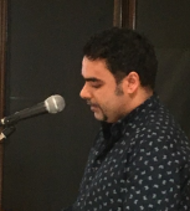 Mo’s sudden death has been a terrible shock to all who knew him. He died in Charing Cross Hospital of a brain aneurism on Tuesday 19th March 2019.
Mo’s sudden death has been a terrible shock to all who knew him. He died in Charing Cross Hospital of a brain aneurism on Tuesday 19th March 2019.
You could say Mo just turned up on my doorstep. He came one day to interview me for his book on Vitamin D called “Prescribing Sunshine”. He maintained that vitamin D deficiency could lead to an immune suppression similar to that described in people with AIDS.
Here was this young man, brought up in Ladbroke Grove, near where I live, who seems to have been an AIDS dissident for a long time. He told me he had gone into the Lighthouse Project in his neighbourhood, an AIDS hospice which has now closed, and confronted them. He dared them to read the leaflets he took along with him which described the AIDS diagnosis as flawed an called the HIV test meaningless.
Mo became an invaluable helper and assistant. He was a meticulous researcher and contributed to the production of some of our film projects. He edited and produced the 16th Anniversary Edition of my book “Positively False – Exposing the myths around HIV and AIDS”. He also came to the Vers Pont du Gard meeting in France in June 2018 organised by Martin Barnes. Mo had never given a power point presentation before. He rehearsed his speech over and over again in order to get the timing right and then gave a brilliant exposition on Vitamin D to rounds of applause.
Mo was the full-time carer for his autistic brother who could not speak. His mother Samina Ahmed always sent me kind messages and would bring back little gifts for me when she travelled to Pakistan. My heart goes out to her as it does to Mo’s girlfriend Laura. They had known each other since they were 19.
Mo was quite reserved. His best friend from school days David Power says so. The two of them loved ‘heavy metal’ and they used to meet regularly to jam – Mo on drums, Dave on guitar.
Mo was a dedicated campaigner on the issues he believed in. He was strong and principled, a loyal friend who never ceased to be supportive. Once, when I told him I was feeling depressed and anxious he wrote,
“It’s best to limit worrying where you can. Life beats us up all the way until death but there’s good in-between.”
— Joan Shenton, April 2019
Etienne de Harven
1928-2019
Professor Etienne de Harven was a highly respected member of the Board of Rethinking AIDS for many years, including a stint as president of the organization. He was a prominent scientist who was brave enough to go as far as concluding that HIV does not even exist.
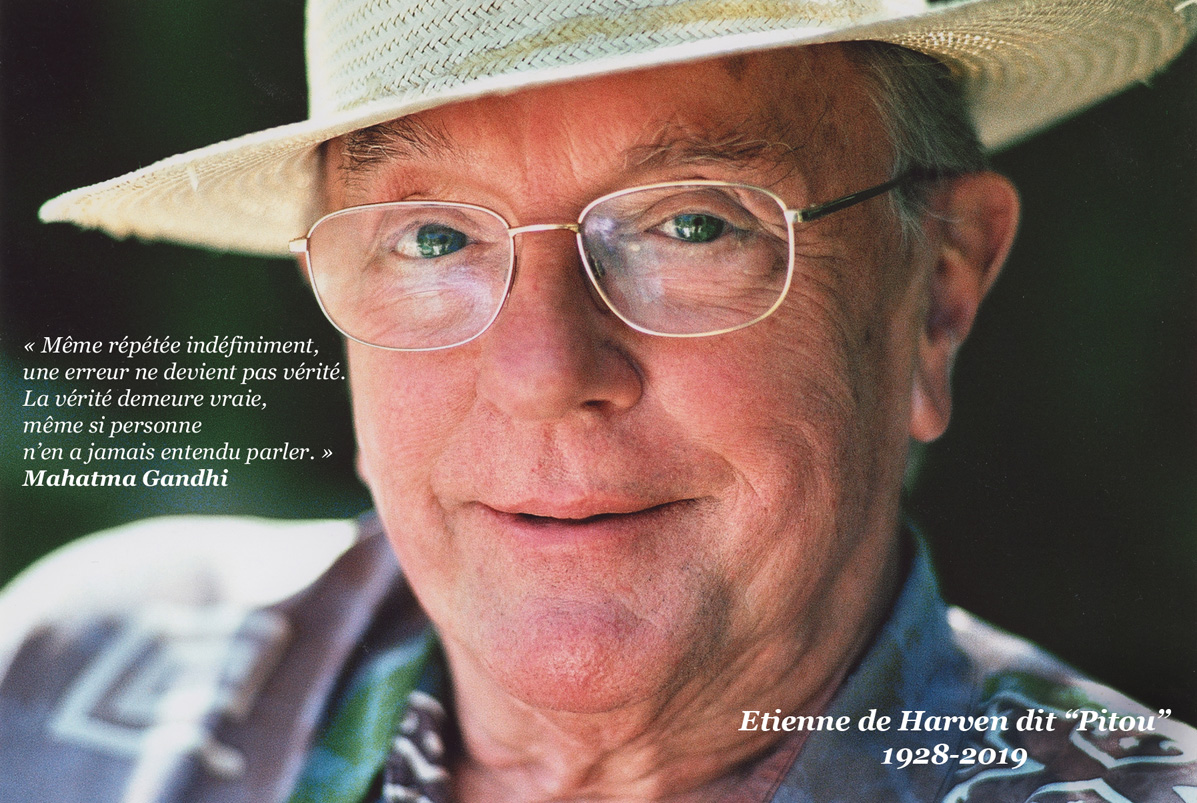
“An error does not become truth simply because it is repeated, nor does truth become error because nobody sees it.” — Mahatma Gandhi
He obtained his medical degree (first class) from the University of Brussels in 1953. From 1955-6 he worked at the Institute of Cancer of Villejuif under Charles Oberling and Wilhelm Bernhard, where he made pioneering observations of the structure of centrioles.
At the Memorial Sloan-Kettering Cancer Center, from 1956-1981, he worked alongside Charlotte Friend and studied viruses, mostly in mouse systems, related to the causation and incidence of leukemia and other malignancies. Later, he provided the first description of viral budding. While at Sloan-Kettering, he was part of a team which discovered "virus-like particles" in cells taken from patients suffering from Hodgkin's disease. He was professor of cell biology at the University of Cornell from 1968-1981 and later professor of pathology at the University of Toronto from 1981-1993, where he researched the marking of antigens on the surface of lymphocytes, and ended his formal career.
As former President of the Microscopy Society of America, he published several papers, mostly related to Cancer Pathologies and electron microscopy procedures for viral experimentation. He held many positions on editorial boards, as a peer reviewer, and on committees.
Etienne was a prominent skeptic of the HIV=AIDS=Death dogma and was one of a group invited in 2000 to South Africa by president Thabo Mbeki to serve on a presidential panel on AIDS. He published a book in 2005 entitled Les Dix Plus Gros Mensonges sur le SIDA (The Ten Greatest Lies About AIDS).
Etienne eventually concluded that HIV did not exist as an infectious pathogen, he believed that measures like ‘viral load’ were detecting HERVs, Human Endogenous RetroViruses, which are generated within our body, not from infection. This position was counter to other AIDS dissidents, some of whom believe that HIV was infectious, but not pathogenic, or only pathogenic with co-factors. Others went even further in the other direction. However, Etienne did not use his belief to divide the movement, he wanted to find factors that unified people, such as the toxicity of medications, and a search for other causes of illness, such as environment and lifestyle.
Etienne remained active until ill health forced him to withdraw from the debate. As late as 2012 he chaired a conference of AIDS rethinkers in the south of France.
Rethinking AIDS remembers all of his accomplishments, and also his contribution to the group, including leading it as President from 2006 to 2008.
Professor Etienne De Harven died on March 6th, 2019.
Comments from the Board of Rethinking AIDS
Marco Ruggiero (board member)
I take this opportunity to express my most sincere condolences for the loss of Prof. De Harven. I had the honor to meet him in person twice in 2009 and 2010, at the RA Conference in California and then at the Conference organized by Christian Fiala and Uta Santos-Koenig in Vienna in concomitance with the World AIDS Conference of that year. Every time I heard his presentations, I felt that the consistency of his observation was indeed flawless. As far as I know, as of today his observation about electron microscopy and HIV have never been disproved and I feel that for a scientist this is the greatest acknowledgement.
Joan Shenton (board member)
We all loved Etienne de Harven. He was warm, generous and immensely kind. He shared his knowledge gladly and never veered away from his firm conviction that the HIV/AIDS hypothesis was a total fraud. He was a leading expert in electron microscopy. When we interviewed him in 1998 he said, “When finally electron microscopy was used to verify the presence of ‘HIV’ virus particles in samples that for fifteen years were regarded as ‘pure virus’, to my greatest dismay these particles were showing practically nothing else but cell debris.”
Martin Barnes (member)
Etienne served as the conference chair in the AIDS dissident meeting I organized in Vers Pont du Gard, France in 2012. As president of Rethinking AIDS, he attempted to bring together the two general factions of the organization (the virus exists, no it doesn’t) under the common belief that AIDS results from lifestyle and environmental causes. His own position was that the virus does not exist and what is being observed are retroviral fragments in the blood from disintegrating DNA resulting from illness. He welcomed me in his home near the Riviera several times and enthusiastically shared his views. I will always remember his emails were overly punctuated ! with exclamation marks !! ...projecting his strong condemnation of the HIV/AIDS paradigm.
Georg von Wintzingerode (member)
I personally remember Etienne as a warm hearted, intelligent and humorous person. I always felt home in his nearness. I miss him a lot.
Roberto Giraldo's Life
January, 2019
David Crowe
Roberto Giraldo, a member of the board of Rethinking AIDS, was recently taken from us. A man with a lot of knowledge, and a lot of love, who used his knowledge for the betterment of humanity rather than the betterment of his bank account.
He graduated as a Medical Doctor, specializing in Internal Medicine with a major in Infectious Diseases from the University of Antioquia, Colombia, in 1969. In 1975 he graduated with distinction from the London School of Hygiene and Tropical Medicine, University of London, with a Masters of Science in Clinical Tropical Medicine.
He spent decades dedicated to clinical, academic, and research activities regarding different aspects of infectious, tropical, and immunological diseases, in various regions of Colombia, the United States, Europe, and Africa.
Much of his research was in the field of secondary or acquired immune deficiencies, especially those occurring in developing countries. In 1967 he studied Toxoplasma gondii and Pneumocystis carinii infections, as surrogate clinical markers for human immunodeficiency, with Professor Jacob Frenckel at the Kansas University Medical Center as well as opportunistic fungal infections with professor Donald Greer at the Centers for Disease Control (CDC) in Kansas City. During 1974 and 1975, at the London School of Hygiene and Tropical Medicine, he studied the main risk factors for endemic Kaposi’s sarcoma, as a surrogate clinical marker for immune deficiency in African countries. This was obviously relevant to the declaration of Gay Related Immune Defiency (GRID) in 1981, later called AIDS.
From 1979 until 1987 he worked as a clinician at a remote, rainforest region of Colombia. Here had the opportunity to work shoulder to shoulder with indigenous traditional healers, exploring ways to address medical issues related to poverty, malnutrition, immune deficiencies, parasites, and infections.
Due to his background, he started to study AIDS in 1981 and had several publications, including a 1997 book— "AIDS and Stressors: AIDS is neither an infectious disease nor is sexually transmitted. It is a toxic-nutritional syndrome caused by the alarming worldwide increment of immunological stressor agents", also published in Spanish.
He was forced to leave Colombia due to his skepticism of the mainstream theory that a previously unknown virus, HIV, was the cause of the syndrome AIDS. His colleagues thought he was mad and tried to commit him to an insane asylum, obviously against his will.
Starting in 1993, he worked as a technologist in the Laboratories of Clinical Immunology and Molecular diagnosis at the New York Presbyterian Hospital, Weill Cornell Medical Center, in New York City. Here had the opportunity to run and know in detail the Elisa, Western blot and PCR (viral load) tests for HIV. While there he reported on unofficial experiments with HIV-negative blood. He discovered that when blood was not diluted 200 times, as is required for HIV testing, that all blood tested positive. This indicated that HIV tests were reacting to the quantity of antibodies in the blood, not to specific proteins. Unfortunately, due to the climate of the times, doing this research officially would have been impossible.
In 2000 he was invited to be a member of the South African Presidential AIDS Advisory Panel and a panelist during its meeting. He was also an advisor to several African countries concerning nutrition and diseases related to poverty. In 2003 he presented to 14 Ministers of Health of the Southern African Development Community (SADC) the scientific bases for this proposal: “Nutritional therapy for the treatment and prevention of AIDS.” Unfortunately, the lure of billions of dollars of money based on acceptance of the HIV=AIDS dogma overwhelmed his attempts, and those of other dissenters, to look for the real reasons why so many people around the world acquired immune deficiency.
He was a former president of Rethinking AIDS: The International Group for the Scientific Reappraisal of AIDS, and a board member until his death. He was also a member of the Board of Directors of Health Education AIDS Liaison (HEAL New York) and of the Art and Science Foundation of Medellin, Colombia. He was a scientific advisor for several non-government organizations in Mexico, Nicaragua, Colombia, Peru, Brazil, Argentina, Chile, Bolivia and Spain.
In 2004 he went on tour in South America, giving many talks to groups around the continent. In 2006 he wrote an article, "HIV Tests Cannot Diagnose HIV Infection", in defense of Celia Farber and her article in Harpers magazine. In 2009 he was a panelist at RA 2009.
I only knew him from about 2006 on, when I first got involved with Rethinking AIDS, but enjoyed spending time with him at an RA meeting in 2006, at RA 2009, as well as at a conference for Monarcas, in Lima Peru, in 2010. He was warm, and funny, and very irreverent at times. Despite his mainstream education, he understood that health was not just pathogens and pills, but involved the environment around people, and the environment within people, and that included the psychological state of people, a state that is still rocked to the core every time a person is diagnosed as HIV-positive, and told that it means that they are infected with a deadly virus.
The world has lost a voice of sanity.
David Crowe
1956-2020
 To all of David's friends,
To all of David's friends,
We have the sad news to share that our dad, David Crowe, passed away peacefully this past Sunday morning, July 12th. Some of you may know this already, and some technical challenges prevented us from sending this out sooner - but we felt it was better to duplicate, rather than to miss notifying a large number of you who were important to him. We know that he was connected to a lot of communities, and while we updated his Facebook page as a memorial earlier this week, we realize this wasn't going to reach everyone. If you're receiving this email, it's because you were on the very long list of friends and contacts that our dad left with us, and asked us to reach out to, before his passing.
In early June, our dad was diagnosed with cancer that was already quite advanced. Since then, his illness progressed very quickly and was greatly affecting his energy levels and comfort.
His disease moved unbelievably fast and we are still wrapping our heads around it. Although we knew there was no cure, we had no idea his time would be so short. We know that he meant so much to so many people, and the support we received from so many of you already has been touching. We are also grateful for the wonderful medical team who took such great care of him, and that we were able to be by his side the entire time.
Condolences, memories and photos may be shared on our Dad's obituary page HERE.
We're in the process of planning a small memorial service at a later date. The size of the memorial will obviously depend on gathering restrictions at that time, but our hope is to be able to offer a web stream of the service for those unable to attend. Sorry to be communicating this news in such a way, but we wanted to update as many of his people as possible. Please take care.
— Aran, Erica & Julia Crowe

